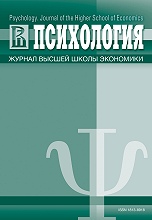Role of Beta and Gamma Oscillations in Working Memory Functions
Abstract
Working memory, the brain’s ability to retain information that is not directly present in the sensory systems, underlies many higher cognitive functions. The putative neurobiological basis of working memory is the self-sustained spiking activity of neurons in the associative regions of the cortex. In addition to the firing rates, collective oscillatory activity of neural ensembles in various frequency ranges is modulated during working memory tasks. In this review, we discuss the existing experimental evidence for the possible roles of beta and gamma oscillations in implementation of working memory functions. We specifically focus on the role of these oscillations in the different phases of the experimental tasks; in particular during the presentation of the to-be-memorized stimuli and during retention of the stimuli in the working memory. We demonstrate that the various studies provide a converging evidence toward the role of the prefrontal gamma oscillations in stimulus encoding and for the prefrontal beta oscillations in working memory retention. We also discuss the reviewed data in a more general framework that implies specific roles for the beta and gamma oscillations in the organization of neural activity. The framework suggests that gamma oscillations are related to the bottom-up propagation of information, as well as to changing the states of the neuronal populations. At the same time, the beta oscillation are presumably related to top-down influences and to maintaining the status quo. Finally, we discuss the main problems of proving the causal roles for prefrontal beta and gamma oscillations in stimulus encoding and retention, as well as lacunea in our understanding of the mechanisms via which beta oscillations influence the activity of the working memory networks. We discuss the potential role of experiments with invasive and non-invasive cortical stimulation, as well as the role of computational modeling of the neural activity in solving the aforementioned difficulties.
Downloads
References
2. Baddeley, A. (2003). Working memory: looking back and looking forward. Nature Reviews Neuroscience, 4(10), 829-839. https://doi.org/10.1038/nrn1201
3. Dipoppa, M., Szwed, M., & Gutkin, B. S. (2016). Controlling working memory operations by selective gating: the roles of oscillations and synchrony. Advances in Cognitive Psychology, 12(4), 209-232. https://doi.org/10.5709/acp-0199-x
4. Engel, A. K., & Fries, P. (2010). Beta-band oscillations-signalling the status quo? Current Opinion in Neurobiology, 20(2), 156-165. https://doi.org/10.1016/j.conb.2010.02.015
5. Feurra, M., Galli, G., Pavone, E. F., Rossi, A., & Rossi, S. (2016). Frequency-specific insight into shortterm memory capacity. Journal of Neurophysiology, 116(1), 153-158. https://doi.org/10.1152/jn.01080.2015
6. Goldman-Rakic, P. S. (1995). Cellular basis of working memory. Neuron, 14(3), 477-485.
7. Haegens, S., Osipova, D., Oostenveld, R., & Jensen, O. (2010). Somatosensory working memory performance in humans depends on both engagement and disengagement of regions in a distributed network. Human Brain Mapping, 31(1), 26-35. https://doi.org/10.1002/hbm.20842
8. Hoy, K. E., Bailey, N., Arnold, S., Windsor, K., John, J., Daskalakis, Z. J., & Fitzgerald, P. B. (2015). The effect of gamma-tACS on working memory performance in healthy controls. Brain and Cognition, 101, 51-56. https://doi.org/10.1016/j.bandc.2015.11.002
9. Kopell, N., Whittington, M. A., & Kramer, M. A. (2011). Neuronal assembly dynamics in the beta1 frequency range permits short-term memory. Proceedings of the National Academy of Sciences USA, 108(9), 3779-3784. https://doi.org/10.1073/pnas.1019676108
10. Kornblith, S., Buschman, T. J., & Miller, E. K. (2016). Stimulus load and oscillatory activity in higher Cortex. Cerebral Cortex, 26(9), 3772-3784. https://doi.org/10.1093/cercor/bhv182
11. Lundqvist, M., Compte, A., & Lansner, A. (2010). Bistable, irregular firing and population oscillations in a modular attractor memory network. PLoS Computational Biology, 6(6), e1000803. https://doi.org/10.1371/journal.pcbi.1000803
12. Lundqvist, M., Rose, J., Herman, P., Brincat, S. L., Buschman, T. J., & Miller, E. K. (2016). Gamma and Beta Bursts Underlie Working Memory. Neuron, 90(1), 152-164. https://doi.org/10.1016/j.neu-ron.2016.02.028
13. Moisa, M., Polania, R., Grueschow, M., & Ruff, C. C. (2016). Brainnetwork mechanisms underlying motor enhancement by transcranial entrainment of gamma oscillations. Journal of Neuroscience, 36(47), 12053-12065. https://doi.org/10.1523/JNEUROSCI.2044-16.2016
14. Panagiotaropoulos, T. I., Kapoor, V., & Logothetis, N. K. (2013). Desynchronization and rebound of beta oscillations during conscious and unconscious local neuronal processing in the macaque lateral prefrontal cortex. Frontiers in Psychology, 4, 603. https://doi.org/10.3389/fpsyg.2013.00603
15. Pesaran, B., Pezaris, J. S., Sahani, M., Mitra, P. P., & Andersen, R. A. (2002). Temporal structure in neuronal activity during working memory in macaque parietal cortex. Nature Neuroscience, 5(8), 805-811. https://doi.org/10.1038/nn890
16. Pogosyan, A., Gaynor, L. D., Eusebio, A., & Brown, P. (2009). Boosting cortical activity at Beta-band frequencies slows movement in humans. Current Biology, 19(19), 1637-1641. https://doi.org/10.1016/j.cub.2009.07.074
17. Roopun, A. K., Kramer, M. A., Carracedo, L. M., Kaiser, M., Davies, C. H., Traub, R. D., ...Whittington, M. A. (2008). Period concatenation underlies interactions between gamma and beta rhythms in neocortex. Frontiers in Cellular Neuroscience, 2, 1. https://doi.org/10.3389/neuro.03.001.2008
18. Salazar, R. F., Dotson, N. M., Bressler, S. L., & Gray, C. M. (2012). Content-specific fronto-parietal synchronization during visual working memory. Science, 338(6110), 1097-1100. https://doi.org/10.1126/science.1224000
19. Siegel, M., Warden, M. R., & Miller, E. K. (2009). Phase-dependent neuronal coding of objects in short-term memory. Proceedings of the National Academy of Sciences USA,106(50), 21341-21346. https://doi.org/10.1073/pnas.0908193106
20. Spitzer, B., Wacker, E., & Blankenburg, F. (2010). Oscillatory correlates of vibrotactile frequency processing in human working memory. Journal of Neuroscience, 30(12), 4496-4502. https://doi.org/10.1523/JNEUROSCI.6041-09.2010
21. Szatmary, B., & Izhikevich, E. M. (2010). Spike-timing theory of working memory. PLoS Computational Biology, 6(8). https://doi.org/10.1371/journal.pcbi.1000879
22. Talakoub, O., Neagu, B., Udupa, K., Tsang, E., Chen, R., Popovic, M. R., & Wong, W. (2016). Timecourse of coherence in the human basal ganglia during voluntary movements. Scientific Reports, 6, 34930. https://doi.org/10.1038/srep34930
23. Tallon-Baudry, C., Bertrand, O., & Fischer, C. (2001). Oscillatory synchrony between human extrastriate areas during visual short-term memory maintenance. Journal of Neuroscience, 21(20), RC177.
24. Wimmer, K., Ramon, M., Pasternak, T., & Compte, A. (2016). Transitions between multiband oscillatory patterns characterize memory-guided perceptual decisions in prefrontal circuits. Journal of Neuroscience, 36(2), 489-505. https://doi.org/10.1523/JNEUROSCI.3678-15.2016





